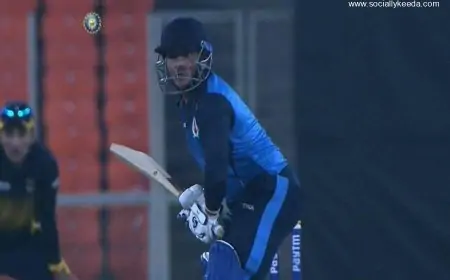There is speculation around modern soccer that it is a "soft" sport. It is not. Soccer remains the hard-contact sport that it once originated in Great Britain. During soccer matches, many players die from injuries sustained from collisions with other participants. Since 2000, for example, the number of players who have died during matches is 51.
Overall Trends
Soccer is one of the oldest common sports. In its early days as a mass show, it was quite dangerous for the professional players involved in the matches. Thus, according to public statistics, between 1881 and 1899, 100 footballers and rugby players died during matches. And this is even though at that time professional leagues existed only in a few European countries. About this and much more from the world of soccer you can also read on our website.
Mortality at soccer matches was so high that it became the subject of intense medical attention. The physicians of the professional medical journal Lancet took it upon themselves to keep statistics. They also analyzed the data to understand the causes of high mortality.
It turned out that the main cause of death of the players at the turn of 19 and 20 centuries. was the poor quality of medical care, and its untimely nature. In addition, the rules of soccer at that time were much stricter - modern restrictions on power holds are the result of an analysis of sad fatal experiences.
Since 1905, the Lancet journal began to record a decrease in player deaths at matches, helped, on the one hand, by improved medical care for injuries, and on the other, by relaxed rules and the appearance of referees on the field. Throughout the 20th century, there was a decrease in mortality, and yet in the 21st century, it has crept up again.
The rise in soccer mortality in the 21st century is attributed to the increased strain on each player. A modern soccer player runs an average of 10 kilometers during a match. According to experts, such a load permanently is bad for the body and leads to heart problems. This is confirmed by statistics - most of the deaths of soccer players during matches are associated with disorders of the heart muscle, caused by the constant infernal strain on the body.
Also, a curious trend is that most of the deaths of soccer players now occur in African countries. This may be due to the low level of medicine in these states.
The most famous modern cases of deaths of soccer players during matches
Since 2000, 51 soccer players around the world have died during matches. This article will not look at the biography of each soccer player who has died, because it would take too much time. We will consider only the most famous cases that have caused a wide public response.
Sergey Vladimirovich Perkhun
On August 20, 2002, Sergei Perkhun - a very talented young goalkeeper, thanks to whom the Army team led the season and had more than 10 wins in a row, stopped his heart at the Moscow Neurosurgery Center.
On August 18, CSKA played a regularly scheduled game in Makhachkala against Anji. Three of Anji's leading players were out of the lineup before the game, for various reasons, so Anji took over from the very beginning. CSKA didn`t concede anything thanks to the work of its goalkeeper.
In the 78th minute of the match, Anji fullback Nebojsa Stojkovic made a long pass towards the goal area when Anji forward Budun Budanov ran after the ball. Sergey Perkhun came out of the penalty area and tried to be ahead. He couldn`t use his hands beyond the line, so he played with his head. He batted the ball away but an Angji player hit him right in the temporal bone.
Initially, the doctors didn`t even realize how serious the goalkeeper`s injury was. He was conscious and talking to the staff. However, after 7 minutes he began to convulse, and the player was taken to the intensive care unit. There was diagnosed an extensive brain swelling and an open head injury. The player was transported to a hospital in Moscow, but he could not be saved. The next day all the news headlines were devoted to the tragedy.
CSKA was the Ukrainian player's first and last club in the Russian Super League. He was born on September 4, 1977, in Dnepropetrovsk, where in the school "Dnepr-75" he started playing soccer. At the time of his death, the player was only 23 years old.
Arno Schaap
On August 4, 2004, the famous Dutch soccer player Arno Schaap died during a match. It happened in the 30th minute of the 1st half of the match between the local teams Hilverjus and Söidvogels. By that time Arnaud had not played professionally and the match was played between amateur teams.
Arnaud suddenly collapsed on the field and lost consciousness. He was given first aid, but he never made it to the hospital. At the time of his death, the player was only 29 years old. Two days later, on August 6, he was to be married. He was left with two small children. The cause of death was given as a heart attack.
Arnaud Schap was born on October 17, 1974. He spent all his professional career in the Dutch top flight. Played in the position of midfielder. He finished his professional career in 2003, a year before his death, at Helmond Sports.
Antonio Puerto
On August 25, 2007, during the match of the 1st round of the Spanish Football Championship between the teams Getafe and Sevilla, defender Antonio Puerto began to have trouble breathing. He managed to get from the field to the locker room, but there the player had another heart attack. Doctors responded quickly, the player was immediately taken to the hospital. For three days the staff fought for the player's life, but could not save it. On August 28, at 14:30 the Sevilla defender died. The cause was named a heart attack.
Two months after his death, Antonio had a son, Aitor, who was given a lifetime right to attend all Sevilla matches for free by the directorate. A. Puerto`s friend, defender Sergio Rama, celebrated victories of the Spanish national team at Euro-2008 and Euro-2012, as well as at the World Cup in 2010, wearing a T-shirt with the image of Antonio Puerto and the signature "Forever with us.
Antonio Puerto was only 22 years old at the time of his death. He began his professional career at the highest level in 2004.
Idaho Endurances
A promising footballer of Nigerian origin died midway through the 2nd half of a match between Sudanese clubs Al Merreikh and Al Amali. The cause of death was never determined. After an accidental collision with his teammate, the player fell on the field, began to choke, and stopped breathing. He died on the way to the hospital. The probable causes of death were heart failure or a heart attack.
Born on August 4, 1984, Endurances spent his entire short career in the African CAF Champions League. He played for Nigerian and Sudanese clubs. In 2009 he became the league's top scorer, also in 2008 played on loan for the club Al Nast and Dubai.
Piermario Morosini
The famous Italian midfielder fainted in the 31st minute of an away match between Serie B clubs Pescara and Livorno (for which Morosini played). The player fell to his knees and could not get up on his own. Before that, he tried three times to get up, but couldn't.
The players asked the referee to stop the match, but he didn't do it immediately. In addition, an ambulance was not immediately able to get into the stadium, because the passage was blocked by a police car, which the officers had left in the wrong place - the arena staff had to break the glass to move the car.
Doctors administered first aid to Piermario on the scene and managed to bring him to consciousness in the ambulance, but he soon had another attack. In all, he suffered three heart attacks. He died in the hospital.
The cause of death was never conclusively established, even after an autopsy. The most probable cause was hereditary myocarditis (inflammatory disease of the heart muscle). But there were also theories that the catalyst was a collision during the last match with Emmanuel Cachin.
Piermario Masarini spent his entire career in the Italian Serie B. He played in the position of midfielder. Spent his most successful seasons with Vicenza. This club as well as Livorno took Morosini's number 25 out of circulation as a tribute to him.
Patrick Ekeng
Cameroonian midfielder P. Ekeng collapsed on May 6, 2016, during a match between Romanian soccer championship clubs Dinamo Bucharest and Viitorul. The player came on as a substitute in the match in the 63rd minute with a score of 3-3, but after 6 minutes he lost consciousness. The doctors tried to take a pulse but could not do it because of the peculiarities of cardiogenic shock. The ambulance left the stadium 2 minutes and 47 seconds after Patrick passed out, but it had no equipment necessary for urgent resuscitation - it was designed only for the transportation of patients.
At the hospital, a team of 10 doctors tried to save the player's life. They finally got a pulse, but Ekeng died 1.5 hours later without regaining consciousness. The cause of death was a cardiogenic shock, a type of heart failure in the left ventricle in which blood begins to circulate chaotically.
Patrick Ekeng was born on March 26, 1990, in Yaoundé, Cameroon. He began his career in Africa, but in 2009 he moved to Europe. He played for French Le Mans, Swiss Lausanne, and Spanish Cordoba. He signed a contract with Dinamo Bucharest, where he played his last match, shortly before his death in 2016.




![[WATCH VIDEO] Sophie Rain and sister Sierra Rain as Black Spiderman goes viral [WATCH VIDEO] Sophie Rain and sister Sierra Rain as Black Spiderman goes viral](https://www.sociallykeeda.com/uploads/images/202403/image_140x98_660976c59cce0.webp)






![[FULL WATCH VIDEO] Will Levis And Gia Duddy Leak Video Viral On Social Media [FULL WATCH VIDEO] Will Levis And Gia Duddy Leak Video Viral On Social Media](https://www.sociallykeeda.com/uploads/images/202405/image_140x98_6651e7ae8038d.webp)

